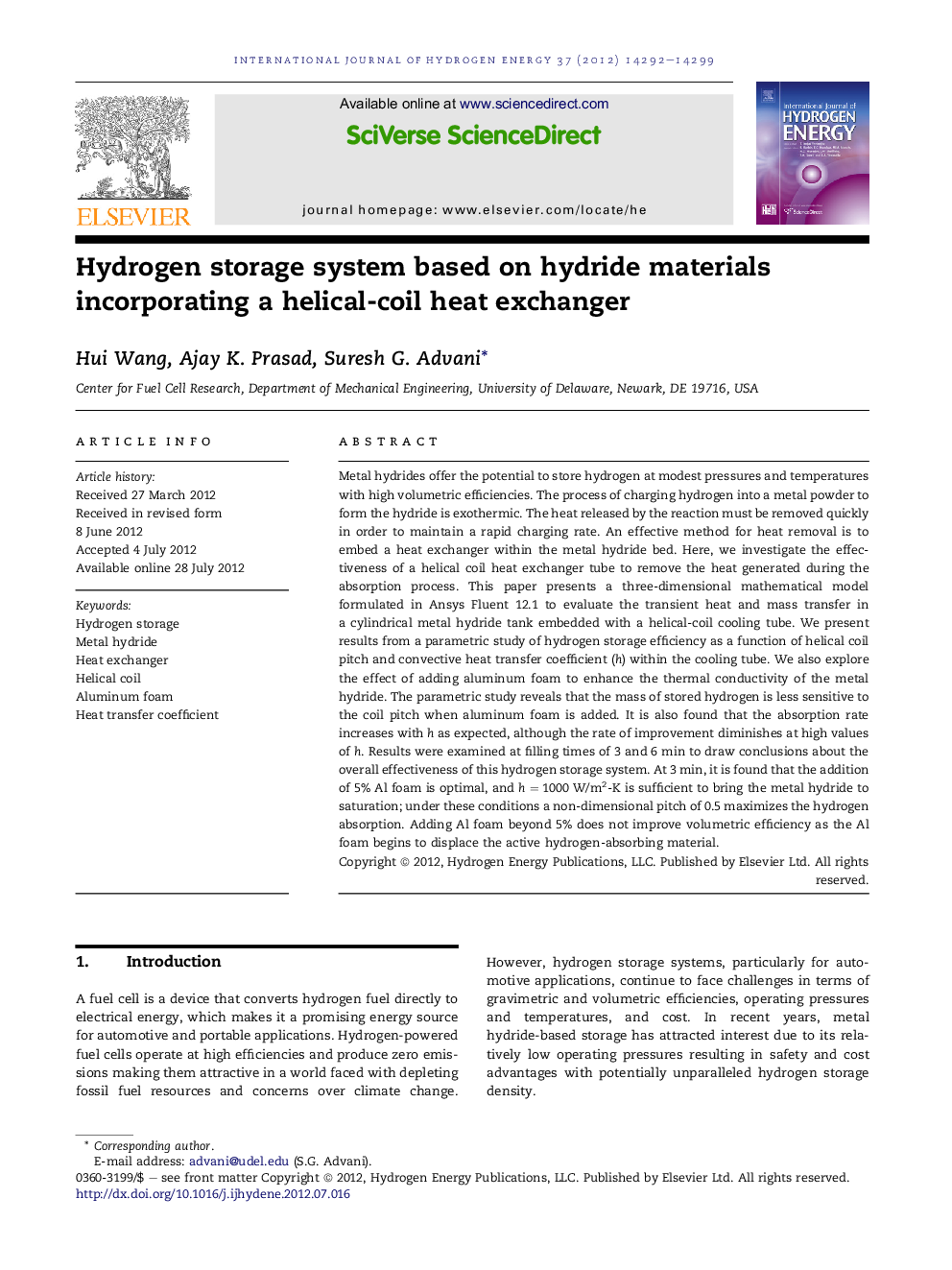| کد مقاله | کد نشریه | سال انتشار | مقاله انگلیسی | نسخه تمام متن |
|---|---|---|---|---|
| 1274775 | 1497550 | 2012 | 8 صفحه PDF | دانلود رایگان |

Metal hydrides offer the potential to store hydrogen at modest pressures and temperatures with high volumetric efficiencies. The process of charging hydrogen into a metal powder to form the hydride is exothermic. The heat released by the reaction must be removed quickly in order to maintain a rapid charging rate. An effective method for heat removal is to embed a heat exchanger within the metal hydride bed. Here, we investigate the effectiveness of a helical coil heat exchanger tube to remove the heat generated during the absorption process. This paper presents a three-dimensional mathematical model formulated in Ansys Fluent 12.1 to evaluate the transient heat and mass transfer in a cylindrical metal hydride tank embedded with a helical-coil cooling tube. We present results from a parametric study of hydrogen storage efficiency as a function of helical coil pitch and convective heat transfer coefficient (h) within the cooling tube. We also explore the effect of adding aluminum foam to enhance the thermal conductivity of the metal hydride. The parametric study reveals that the mass of stored hydrogen is less sensitive to the coil pitch when aluminum foam is added. It is also found that the absorption rate increases with h as expected, although the rate of improvement diminishes at high values of h. Results were examined at filling times of 3 and 6 min to draw conclusions about the overall effectiveness of this hydrogen storage system. At 3 min, it is found that the addition of 5% Al foam is optimal, and h = 1000 W/m2-K is sufficient to bring the metal hydride to saturation; under these conditions a non-dimensional pitch of 0.5 maximizes the hydrogen absorption. Adding Al foam beyond 5% does not improve volumetric efficiency as the Al foam begins to displace the active hydrogen-absorbing material.
► Hydrogen storage density is less sensitive to pitch for higher amounts of Al foam.
► Higher convection coefficient improves the hydrogen absorption rate.
► Improvement in absorption rate plateaus for higher values of convection coefficient.
► Al foam percentage of 5% maximizes the hydrogen storage density.
► Higher amounts of Al foam displace hydride material and lower absorption rate.
Journal: International Journal of Hydrogen Energy - Volume 37, Issue 19, October 2012, Pages 14292–14299